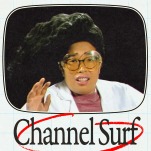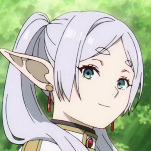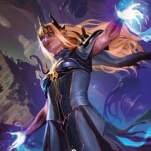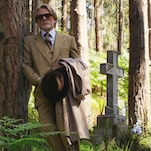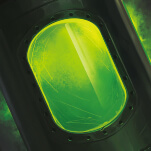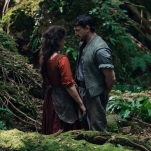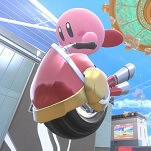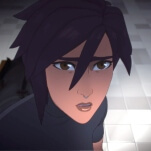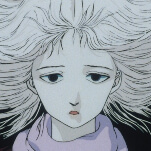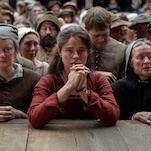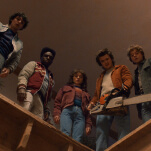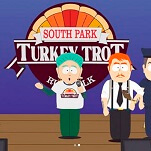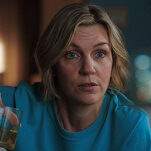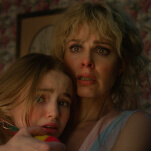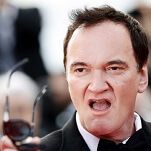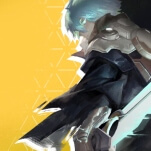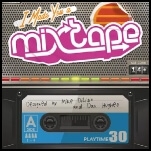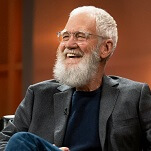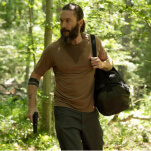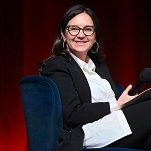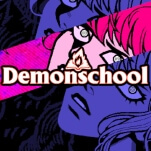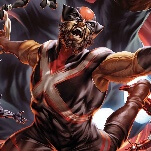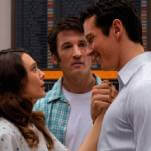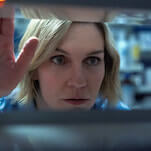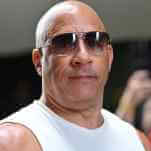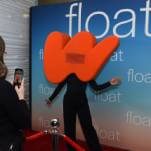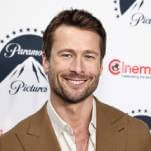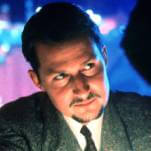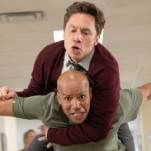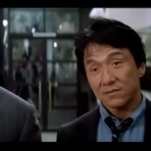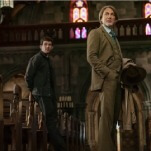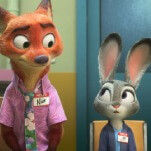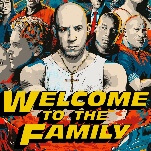Land Of The Lost, “Album”

Puppeteering impresarios Sid and Marty Krofft arrived exactly when they were needed, and spent the better part of the ’70s permeating the subconscious of a generation of children fractured by divorce, drugs, recession, and culture wars. The brothers’ origins were hazy by design—for years, they pretended a phony bio cooked up by their publicist was the gospel truth—but it’s generally accepted that Sid began his career in the ’40s in vaudeville and with the circus, and toured the world before he turned 20. (In David Martindale’s book Pufnstuf & Other Stuff, Sid claims that when he performed in Middle Eastern countries, his audiences assumed he was performing actual magic when he brought his marionettes to life.) Frequently described as “gentle” and “a dreamer” by those who’ve worked with him, Sid was joined by his more business-minded brother Marty, who initially took advantage of Sid’s fame by booking solo gigs under his older sibling’s name. As a duo, their combination of artistry and chicanery made them formidable. Marty made sure they took advantage of any opportunities that came their way, while Sid made sure that everything they worked on had his personal touch.
Though they’re primarily known as the kings of ’70s Saturday-morning television, the Krofft name was familiar to the general public in the decade before H.R. Pufnstuf. In the early ’60s, they mounted a racy revue called Les Poupées De Paris, which drew huge crowds and national media attention for its sexy, half-clad marionettes. The Kroffts took the show Off-Broadway (where they invited audiences to come backstage and examine the cast, never letting on that some of their most animated “puppets” were actually costumed little people), and played multiple World’s Fairs before briefly becoming regulars on The Dean Martin Show. The Kroffts were hailed throughout the ’60s for their bold, colorful, imaginative staging, and were invited to create costumed characters for advertising campaigns, design attractions for the nascent Six Flags theme-park chain, and help develop Hanna-Barbera’s NBC series The Banana Splits Adventure Hour.
The success of The Banana Splits would set the Kroffts on the course that defined them. Asked by NBC to pitch their own series, the Krofft brain-trust came up with H.R. Pufnstuf, an eye-popping hybrid of The Wizard Of Oz, Mr. Rogers’ “Neighborhood Of Make-Believe,” and the cult science-fiction series The Prisoner. The Kroffts’ show starred Jack Wild as a preteen boy stranded on an island rampant with dangers and wonders. The brothers poured a lot of their own money into Pufnstuf to pad out NBC’s paltry budgets, and by the time they finished the season’s full 17-episode order, they couldn’t afford to make any more. But those 17 episodes went over so well that they were replayed on NBC for two solid years. In the meantime, the Kroffts kept coming up with new shows, like the Pufnstuf-ish The Bugaloos and Lidsville, also about mysterious lands where displaced characters unite against bumbling despots.
Describing the appeal—and the uniformity—of their TV projects in Pufnstuf & Other Stuff, Sid says, “That’s the classic story, isn’t it? You’re going on the adventure, as a kid, and all of a sudden something happens and now it’s ‘God, when’s he going to get home?’” But tapping a primal fear wasn’t all these shows had going for them. The Kroffts developed a kid-sized version of the loopy psychedelia that was infecting the culture, offering delirious visions of worlds populated by colorful creatures, talking hats, singing bugs, and heavy doses of white and black magic. What’s most remarkable about the Krofft oeuvre today isn’t so much the thinly veiled drug references to “puffin’” and “lids,” but the glum recurring situations. The standard Krofft setup had a moppet (or moppets) stumbling into an alternate universe, where their companions were gaily anthropomorphic but intellectually dim, and where their parents were replaced by evil sorcerers. The Krofft landscape made perfect sense to a growing army of latchkey kids, as well as to youngsters likely to enjoy the shows more for their color and activity than for their metaphors for loneliness.
Yet while Pufnstuf, The Bugaloos, and Lidsville all made a strong impression (and lived on in repeats), none lasted more than a season. The Kroffts’ Land Of The Lost was different. Though it told a similar story—about a widowed father and his two kids disappearing through a time/space warp and traveling to a world populated by aliens, ape-men, and dinosaurs—and though it debuted on NBC in fall 1974, the same year ABC and CBS both aired Saturday-morning shows with prehistoric themes, Land Of The Lost ran for three seasons, becoming the Kroffts’ biggest and most critically respected hit. The brothers were the show’s producers, and were closely involved with character design, but the writing staff was made up of a mix of Krofft veterans and science-fiction/fantasy heavyweights, including a handful of Star Trek scribes. In the years since its cancellation, Star Trek had become a sensation in syndication, prompting intelligent TV science fiction to come back into favor. Land Of The Lost capitalized on the trend.
The show aired late in the morning, aiming for more of a preteen audience, and the writers took their time exploring the strange world they created, parceling out information week by week. In the opening credits, Rick, Will, and Holly Marshall fall through a warp on a rafting trip, and in each episode, they find out a little more about where they are. First, they meet the race of hairy humanoids called the Paku (whose guttural language was designed by a UCLA linguistics professor). Then they discover the towering reptilian villains known as the Sleestak, played by costumed UCLA basketball players, including future NBA bad-boy Bill Laimbeer. Later, they learn, in a Planet Of The Apes-like twist, that the Sleestak are venal, reactionary descendants of an advanced alien race, the Atrusians.
In the October 12, 1974 episode “The Stranger” (written by Walter Koenig, a.k.a. Chekov from Star Trek), the Marshalls encounter a time-displaced Altrusian, Enik. Then, in the October 19 episode—the seventh overall—the Marshalls find out what some of the ancient Altrusian technology could do. “Album” (written by Dick Morgan and directed by Bob Lally) has almost no plot. Will and then Holly are called to a mysterious cave/temple by a high-pitched noise, and when they walk in, they each pick glowing blue crystals out of a clump of colored rocks, and immediately see a hazy image of their late mother. But what they don’t realize is that the cave and the rocks are a Sleestak trap, which Rick frees his kids from at the last minute.
How “Album” conveys that plot is what makes it such a powerful 23 minutes of television. Unlike the earlier “lost boy” Krofft shows, Land Of The Lost had a procedural quality that enhanced the fantasy: It was tailor-made for the kind of viewers whose desert-island daydreams involve gathering firewood and building sturdy shelters. Rick Marshall (played by Spencer Milligan) was a park ranger before the family dropped off the face of the Earth, and he came to their adventure with significant survivalist skills. Throughout the series, the elder Marshall approached their dilemmas systematically, drafting plans for getting home while keeping his kids focused on what needed to be done if they were stranded forever. In the continuum of TV dads, Rick Marshall was squarely on the Mike Brady/Andy Taylor “can do” side: the kind of pop who’d put his knee up on the nearest object with studied casualness before delivering sage advice.
In “Album,” Holly (Kathy Coleman) discovers that some creature has been “chewin’ on our food while we sleep,” and takes her cues from old adventure movies. She constructs a trap, which fails because she doesn’t secure the food supply before she lays the bait. (“It’s like trying to catch a mouse with a piece of cheese in a cheese factory.”) Her dad lets her take charge of the project, but makes suggestions and serves as her sounding-board. And while that’s going on, he asks Will (Wesley Eure, billed only as “Wesley” at this point in his career) to weed the family’s garden. The chores serve two functions: to make sure the Marshalls have plenty to eat, and to keep the children from getting bored and despondent.

